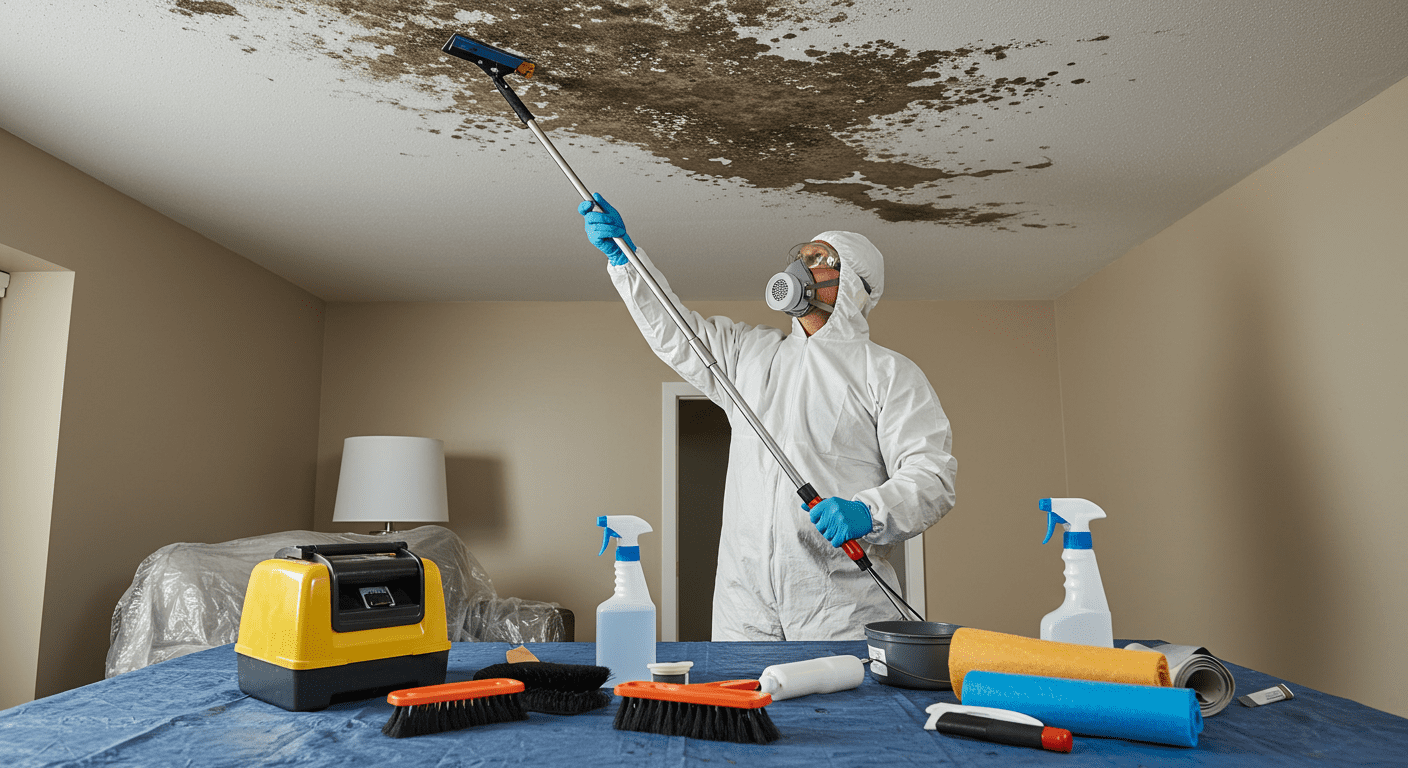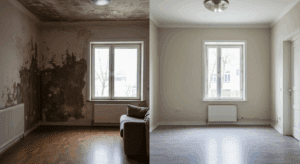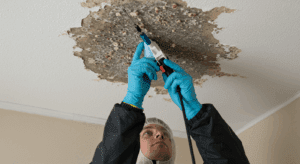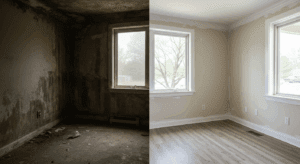White mold is a common household issue that can pose serious health risks and damage your property if left untreated. For residents of West New York, NJ, understanding the causes, risks, and solutions for white mold is essential to maintaining a safe and healthy living environment. This guide will walk you through everything you need to know about white mold, from identification to prevention.
What is White Mold?
Definition and Characteristics
White mold is a type of fungus that thrives in damp and humid environments. It often appears as a powdery or fluffy white substance on surfaces such as wood, drywall, and fabrics. Unlike black mold, which is darker and more toxic, white mold is less noticeable but can still cause significant problems if ignored. Its appearance can sometimes be mistaken for efflorescence, a harmless salt deposit, but white mold has a distinct musty odor and spreads over time.
Common Causes of White Mold Growth
White mold thrives in areas with high humidity, poor ventilation, and water damage. Basements, attics, and bathrooms are common hotspots due to their tendency to retain moisture. Leaky pipes, roof leaks, and condensation can create the perfect breeding ground for mold. In West New York, NJ, the humid climate during certain seasons further exacerbates the risk of mold growth, making it crucial for homeowners to stay vigilant.
Health Risks Associated with White Mold
Potential Health Effects
Exposure to white mold can lead to various health issues, particularly for vulnerable groups such as children, the elderly, and individuals with respiratory conditions. Mold spores can irritate the respiratory system, causing symptoms like coughing, wheezing, and throat irritation. Prolonged exposure may exacerbate asthma and lead to chronic respiratory problems.
Symptoms of Mold Exposure
Common symptoms of mold exposure include sneezing, nasal congestion, skin irritation, and watery eyes. In severe cases, individuals may experience headaches, fatigue, and difficulty breathing. If you or your family members notice these symptoms, it’s essential to investigate your home for mold and take immediate action.
Steps to Identify White Mold in Your Home
Signs of Mold Presence
Identifying white mold early can save you from costly repairs and health complications. Look for visible signs such as white, powdery patches on walls, ceilings, or furniture. A musty odor in specific areas of your home is another indicator of mold growth. Additionally, pay attention to areas prone to moisture, such as under sinks, around windows, and in basements.
When to Seek Professional Help
While minor mold issues can be handled with DIY methods, extensive mold growth requires professional intervention. If the mold covers a large area or has penetrated deep into surfaces, it’s time to call a certified mold remediation service. Professionals have the expertise and equipment to safely and effectively remove mold, preventing it from returning.
Mold Remediation and Prevention Strategies
DIY Mold Removal Techniques
For small-scale mold problems, homeowners can attempt DIY removal using household items like vinegar or baking soda. Start by wearing protective gear, including gloves and a mask, to avoid inhaling mold spores. Use a spray bottle to apply a cleaning solution to the affected area, then scrub with a brush or cloth. Ensure the area is thoroughly dried afterward to prevent regrowth.
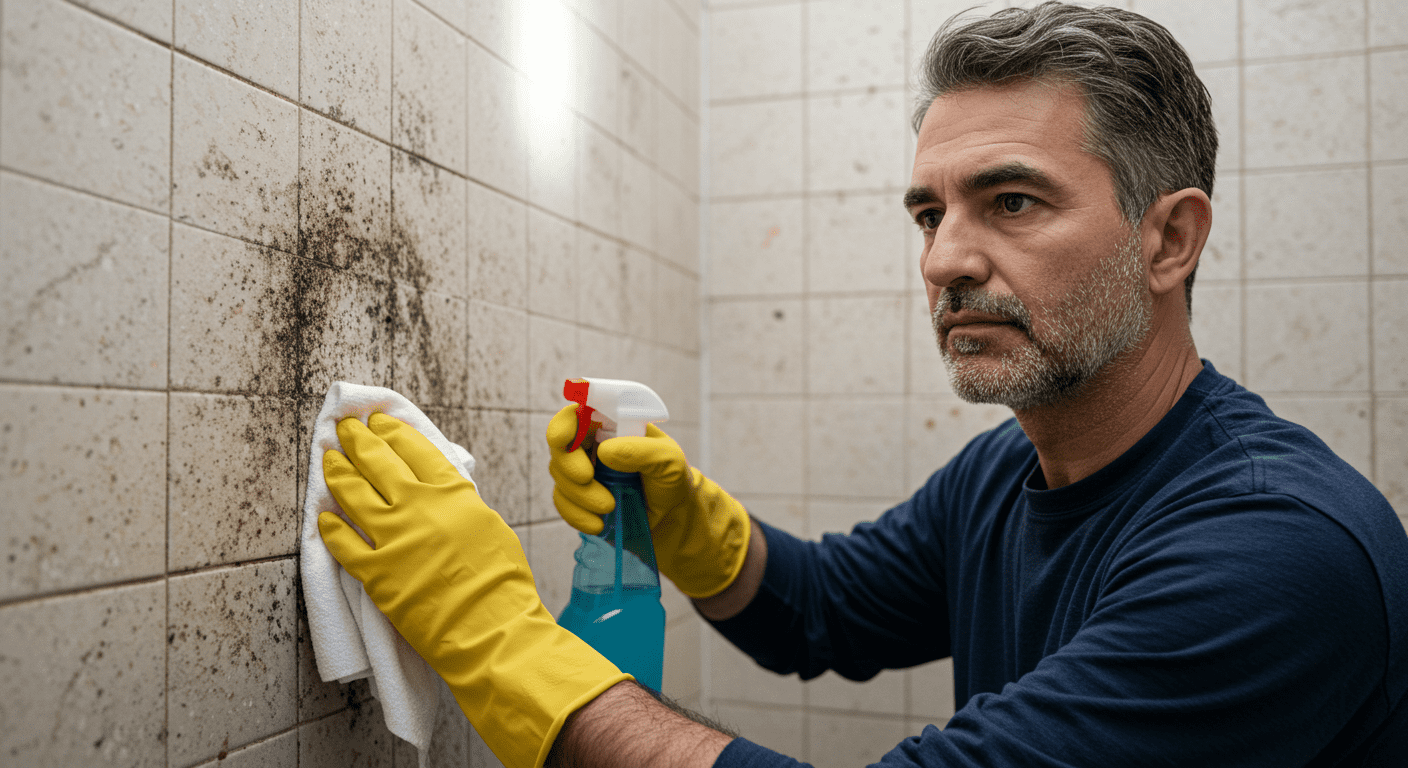
Professional Mold Remediation Services
For severe mold infestations, hiring a professional service like Voda Cleaning & Restoration is highly recommended. Professionals use advanced techniques and equipment to remove mold safely and efficiently. They also identify the root cause of the problem, ensuring long-term solutions. Investing in professional remediation not only protects your health but also preserves the value of your property.
Preventative Measures
Preventing mold growth is key to maintaining a healthy home. Start by controlling humidity levels with a dehumidifier and ensuring proper ventilation in moisture-prone areas. Regularly inspect your home for leaks and repair them promptly. Additionally, consider waterproofing your basement and using mold-resistant paint in high-risk areas. For more tips on mold prevention, check out this comprehensive guide.
Conclusion
White mold is a serious issue that requires immediate attention to protect your health and home. By understanding its causes, risks, and solutions, residents of West New York, NJ, can take proactive steps to address mold problems effectively. Whether you opt for DIY methods or professional services, the key is to act quickly and prevent mold from spreading.
Are you concerned about white mold in your home? Contact Voda Cleaning & Restoration today for a free estimate and ensure a safe, healthy living environment for you and your family!
